services
-
Documentation and Study of Materials
The restoration process begins with the study and inspection of the material and concludes with the documentation of the work undertaken. The analysis of the available elements and non-filmic sources allows for the most appropriate restoration workflow to be determined and the establishing of a timeframe for the conclusion of the work, as well as the immediate identification of the urgency of the work. At the end of the restoration process all work phases, problems encountered and solutions adopted are accurately documented.
-
Film Repairs
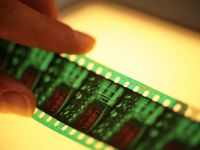
The manual reparation of the film is the first working phase involved in the restoration of a film. Its aim is to restore the original film’s mechanical capability, allowing for its passage through the machines in the successive phases of the restoration process (printers, scanners, telecine, etc).
The artisan reparation work is carried out by hand, principally on a manual rewinding table. The instruments employed are scissors, scalpels, tweezers, swabs, solvents, specialised cinema adhesive tape, glue (our own production, specifically for splicing together nitrate film stock and acetate film stock) and brushes. During the reparation phase all splices are checked and, if required, redone. Any physical damage, such as breakages, strains or tears, which may be located at the perforations or on the actual images and may constitute lacunae of varying size and severity, is repaired. Furthermore, any areas of dirt are manually cleaned. The guiding principles during the reparation phase are the mechanic functionality and the aesthetic of the film stock: a good intervention is simply the correct compromise between the two.
-
Treatment of chemically deteriorated film
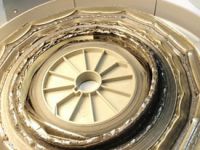
In recent years, L’Immagine Ritrovata has invested in an area dedicated to providing what are commonly known as “chemical treatments” (drying, softening, rehydration), meaning that it is today capable of giving a second life to film which otherwise would have been lost. In fact, the chemical deterioration of film is an increasingly common problem in the sector, a natural and irreversible process, which in the most extreme cases can result in the destruction of nitrate and cellulose triacetate film material.
A material suffering from chemical deterioration undergoes chemical and physical transformations which significantly reduce functionality and, therefore, the possibility of utilising it. This makes it impossible to work directly with the film in its deteriorated state and, therefore, impedes any possibility of a successful restoration project.
Thanks to a drying treatment, film bonded together (in whole or only in part), can once again be utilised without the risk of the support or emulsion being damaged when mechanically unwound. Similarly, film that has become dry and fragile due to chemical deterioration, sometimes resulting in physical deformation or loss of original flatness, can recover its lost flexibility and plasticity by means of a specialised softening and rehydration treatment. Subsequently, it too can be worked on without risk of damage or breakage.
Thanks to interventions of this nature and the continual monitoring of their progress, and the reaction of reels which have undergone such treatment, it is now possible to temporarily restore the mechanical functionality of film suffering from chemical deterioration, allowing the material to be duplicated without suffering any further damage.
-
Film Washing

The film is subjected to complete ultrasound cleaning: it is passed through a wash tank containing HFE and, by means of a system of rotating sponges, undergoes the ultrasonic process. Finally, it is dried by a strong, precise jet of air.
-
Scanning
.jpg)
L'Immagine Ritrovata is equipped with Arriscan. It can scan cellulose nitrate, diacetate and triacetate films in extremely poor preservation state. Films that are physically badly damaged can be scanned and worked on digital following the common digital restoration workflow. Also films with serious vinegar syndrome issues can be digitized.
Arriscan can work without any PIN register, and it allows adjusting tension while film is running with two options: "normal" and "soft". In sprocketless mode the scanner is absolutely complete: besides scanning, step size can be set. This system tells the machine the size of the frame to be scanned and this setting will be kept unchanged all along the reel. Three and two-perforation films can be scanned as well. Another key possible adjustment in sprocketless mode is making the loop without unloading and reloading the film, something which happens normally when films are particularly shrunk, so there are no risks of damaging the film, missing frames or losing the loop. All this can be avoided without rerunning the scan, so that the work can be done considerably faster and safer.
Thanks to Arriscan, a number of restorations that before necessarily followed the traditional photo-chemical chain can be carried out today directly by scanning the original film and skipping the analogical duplication, for unequalled better results. Arriscan is extremely accurate in handling materials that can be very fragile and it covers the whole latitude even of printfilm - if it comes worse to worse you can even scan single frames.
In addition to this, both color and black-and-white film stocks can be scanned using the Arriscan's wetgate option, which washes away dust and conceals scratches during the scanning process. The wetgate option dramatically reduces digital cleaning times and, on archive materials in particular, it is the feature that makes the whole difference.
-
Comparison
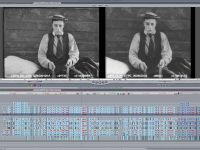
The Comparison Department is the area of the laboratory that specifically deals with projecting the reconstruction of films, through the comparison of all available elements in the form of low resolution digital files. The main instrument used in the comparison process is audio-video editing software, which allows for a frame-by-frame analysis of the sources to compare their state of completeness. This study complements information coming from the Repairs Department, allowing for accurate and precise feedback on the elements. Throughout the duration of a restoration, the Comparison Department is the one place where a film in its entirety is readily available, where all the sources that have arrived at the laboratory, once analysed, can be immediately referenced, allowing for a constant and complete overview of the project.
-
Digital Restoration
The Digital Restoration department makes use of two principal software programs for digital cleaning and digital retouching: Revival by Black Magic, Phoenix by Image System, Diamant by HS Art. These programs complement, and are used in parallel with one another to carry out corrections on a vast range of problems and flaws:
- image stabilisation
- deflickering
- colour breathing correction due to colour deterioration
- elimination of lines
- reconstruction via the interpolation of partial lacunae and entire frames
- elimination of tape and splice marks
- elimination of dirt, dust and scratches
- reduction of mould halos
- reduction or elimination of grain
- video noise correction
The software allows for a manual, semiautomatic or automatic workflow, which is supplemented by a thorough control and frame by frame correction carried out by specialists in this sector.
-
2K and 4K Colour Correction
In cinematographic restoration the term “grading” is used to describe the procedure of altering the scanner’s base signal to recuperate and improve the information and details, the original look and tone which are present on the film. Today, colour correction is carried out digitally as the instruments available allow for a far more exact intervention on the film’s photography with respect to traditional photochemical techniques.
These new techniques permit the virtual reconstruction of images which would otherwise be irrecoverable, where the level of deterioration excludes the possibility of intervention by traditional means. In this way the possibility of recovering visual documents and all the information contained within them is considerably increased. Two types of colour corrections can be carried out: primary colour correction (regarding the entire image, by modifying contrast, luminosity, colour, saturation) and secondary colour correction (regarding only selected elements from the image: a specific area of the frame or just a colour).
The purpose of colour correction is to obtain the final look of the film, which is then transferred to all types of support, from video to film. For this reason it is very important that the work is carried out on monitors that have been systematically calibrated according to international standards.
L'Immagine Ritrovata's in-house grading suite is equipped with Digital Vision's Nucoda Film Master software and a CINEO35 2.5K digital projector from ProjectionDesign, allowing for the highest quality precision colour management available.
-
Mastering and DCI
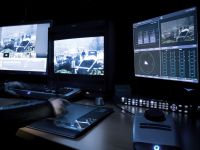
L’Immagine Ritrovata is equipped to provide professional solutions for digital video and cinema in the following formats:
Digital Video: HDCAM and HDCAM SR 4:2:2 and 4:4:4, Digital Betacam, Betacam SP, DVD.
DCI: Digital Cinema Distribution Masters (DCDM), Digital Cinema Packages (DCP), Key Delivery Messages (KDM), 4K and 2K resolution, standard InterOP and SMPTE.
The systems employed are DVS Clipster and Quantel eQ, the best machines available today for the realisation of DCP and video masters.
The digital VCR utilised are Sony SRW5500 HDCAM and Sony DVW2000P Digital Betacam.
All processes rigorously follow international audio/video and DCI specifications.
The video masters are checked on a calibrated Sony HD Grade 1 Monitor, while the DCP are tested in a screening room using a Christie CP2210 Projector and a Doremi DCP2000 Server.
-
Subtitling
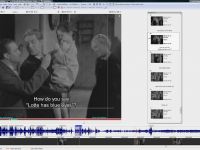
All restored cinematographic works, be they produced in Italy or in any other country of the world, are provided with subtitles. Depending on their circulation and the original language, the films are subtitled in English, Italian, French and other main European languages, including subtitles for the deaf and hard of hearing. Thanks to a wide network of external collaborators, coordinated by the Subtitling Department, it is possible to have films from all around the world translated. The process of adaptation, translation, spotting, revision and the production of subtitle files, for which the EZTitles© program on the Windows platform is used, is undertaken in parallel with the restoration phases.
L’Immagine Ritrovata provides subtitles per every support and format, from film to DVD and BlueRay, from digital cinema to electronic subtitles for theatre projection.
-
Sound Restoration
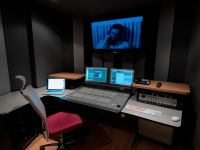
All audio work is performed with a constantly updated Avid/Digidesign ProTools HD system, to guarantee perfect compatibility with any other studio, laboratory or professional. A large range of plug-ins, analog outboards and PMC speakers complete the equipment.
The digital acquisition system based on Sondor OMA/E has been recently equipped with COPS xi2K technology, which makes L'Immagine Ritrovata laboratory one of the few facilities in the world that can scan any optical negative format at high definition. All work processes that follow the scan stage will be improved and quickened by this new technology's ability to real-time manipulate chromatic scale, contrast and scan area onto materials that were unreadable up to now.
Optical sound recording on new negative tracks is carried out with a Westrex 35mm.We can carry out audio conversions, acquisitions and transfers from and onto any format and support, modern or old.
All restorations undertaken begin with a careful analysis of the material and an in-depth study of the period and region from which it originates, thereby respecting the originality and uniqueness of the source.
A constantly growing audio library, over a terabyte in size, allows for the recreation and reconstruction of any environment or sound effect during the post production phase.
Editing of live recordings, sound design, multi-channel mixing of music and effects, mastering for broadcast, TV and cinema, complete the work available from our organisation.
-
Film Recording
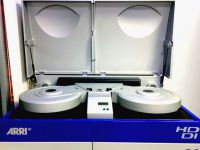
The laboratory has two ARRILASER film recorders. These machines are equipped with a laser system that allows digital images to be recorded onto 35mm at 2K or 4K resolution. The Solid State Lasers guarantee high quality images printed onto film, quickly and reliably. It is possible to request all common aspect ratios (1:1.19 - 1:1.33 - 1:1.37 - 1:1.66 - 1:1.85 - 1:2.35 CS), with speeds of up to 1.7 seconds per frame for 2K resolution or 3.5 seconds per frame for 4K resolution.
-
Print and Processing
The Film Processing Department represents the historical heart of L’Immagine Ritrovata and even today continues to be the link between the laboratory and the origins of cinematographic technology.
L’Immagine Ritrovata is equipped to duplicate original 35mm negatives and black and white and colour positives in a traditional manner: the laboratory’s considerable experience in this field positions it at the forefront of the treatment of nitrate materials suffering from shrinkage problems, and means that all work is carried out with the greatest of respect for the historical value of the original material. The laboratory also provides print and processing services for work copies and black and white and colour positive release prints. This work is made possible thanks to an array of modern machinery. Today, the Print and Processing Department also deals with the processing of digital images and sound in cases where the project requires that the digitally restored version is transferred back onto film
-
Training Course
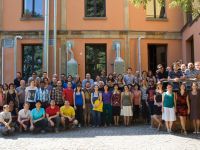
L'Immagine Ritrovata periodically organises training courses in various sectors. The trainees are guided and instructed by laboratory personnel who make available their knowledge and the possibility to use the machines and software with which the laboratory is equipped.
L'Immagine Ritrovata also hosts the Film Restoration Summer School’s two week practical training course. This intensive course is organised by Cineteca di Bologna and promoted by the Fédération International des Archives du Film (FIAF), the Association des Cinémathèques Européennes (ACE) and the European Union’s MEDIA Plus Programme.
The principal objective of this project is to share with the chosen participants the knowledge and experience of sector professionals and experts from all over the world, together with the laboratory and Cineteca staff.
The Film Restoration Summer School / FIAF Summer School is usually divided into three phases:
- On-line distance learning
- Theoretical meetings during the Il Cinema Ritrovato festival
- Laboratory-based training course












